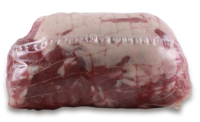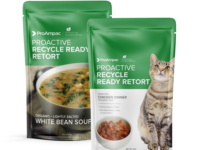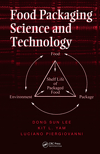According to Cassandra Yu, Avery Dennison’s product manager, rapid roll, shrink sleeves represent a strong growth segment in packaging right now – and it’s a growth rate that isn’t expected to slow any time soon. In fact, she says the heat shrink sleeve format in North America is clipping along at a 7 percent growth rate, as it branches beyond food and beverage, nutraceuticals and household chemicals, and makes inroads into new categories like health and beauty.
“Growth rate continues to be strong,” she says. “It’s expected to continue to outpace other label technologies. (Shrink sleeves) give brands a way to really compete on shelf against this world of brands that they’re seeing. It has 360-design, offers opportunity, and it’s a really great billboard to advertise your brand and communicate your message to your customer base.”
We recently caught up with Yu for an in-depth conversation on shrink sleeves. Here’s a look at what else she had to say about the labeling option:
On factors driving shrink sleeve growth:
What’s primarily driving this is there have been changes in material technology and equipment has really improved. We’re starting to see more of your narrow to mid web converters really getting into the mix. It offers great real estate for imagery and helps you compete against multiple brands. You need ways to drive shelf appeal and catch customers’ eyes. It also has great functional benefits. It looks good and maintains presence throughout the entire value chain. Even with eCommerce, it helps product imagery pop off the web page versus smaller pressure-sensitive labels that aren’t as eye catching when customers are scrolling through pages and pages online.
On how shrink sleeves fit in the flexible packaging market:
Like flexible packaging, shrink sleeve label technology is an obvious growth area that many label converters and packagers are evaluating to adopt. I think they view shrink as another option to increase/enhance their value proposition and diversify their current capabilities. It is an alternative label marketplace that requires unique equipment and knowledge that can help them differentiate from the mass of traditional pressure-sensitive label converters that do not have that capability. While the technical hurdles are not as high as flexible packaging, running shrink does require a level of technical knowledge that exceeds the traditional pressure-sensitive label – especially from a printing standpoint. Narrow web customers that have invested in shrink have found it to be a unique segment for them that has driven top line growth and expanded their product offering. Their fear is commoditization and their ability to differentiate as more and more narrow web converters get involved in shrink. I think that’s real but also common for any marketplace.
On design considerations with shrink sleeves:
That’s the tricky part, the design and the conversion – the whole process is different than traditional labels, and then you have the added step of deseaming it and the decoration with the tunnel. It’s a great media, it helps to maximize creativity, shelf appeal and engagement with customers. There’s advancements in digital technology. That’s allowed for a lot of customization so you can get more intimate with your target audience through personalization. Research shows that packaging functionality is also really important, and product safety are two things that are important to consumers – not just aesthetics and shelf appeal. So potentially having that tamper evident seal and that full sleeve with the tamper evident built in, it helps translate confidence. (Customers) have peace of mind that it hasn’t been opened. There are definitely limitations that need to be considered from a design perspective with the art work, and the container shape and embellishments that you have planned for the material. You really need to implement best practices for designing shrink sleeves in the pre-press process.
On challenges for converters:
The most important thing for converters is to get involved early in the design process. They want to ensure that they’re selecting the right material considering the container. They want to understand the shape of the product, whether it has complex contours or simple contours, and what is the decorator’s technology of choice. All of those things will drive the success and the performance of the shrink sleeve. The earlier they can get involved in the process, the fewer hiccups they’ll see along the way.
On sustainability benefits of shrink sleeves:
There are definitely advances in technology. Things like floatable technology out there allow (shrink sleeves) to more easily get through the recycling process. There are different materials and resin formulas that are out there – some go through the recyclers’ process easier. There has been a lot of innovations in the ink and the ink solutions to help drive recyclability, as well as the seaming solutions. There are a lot of developments.
Avery Dennison







